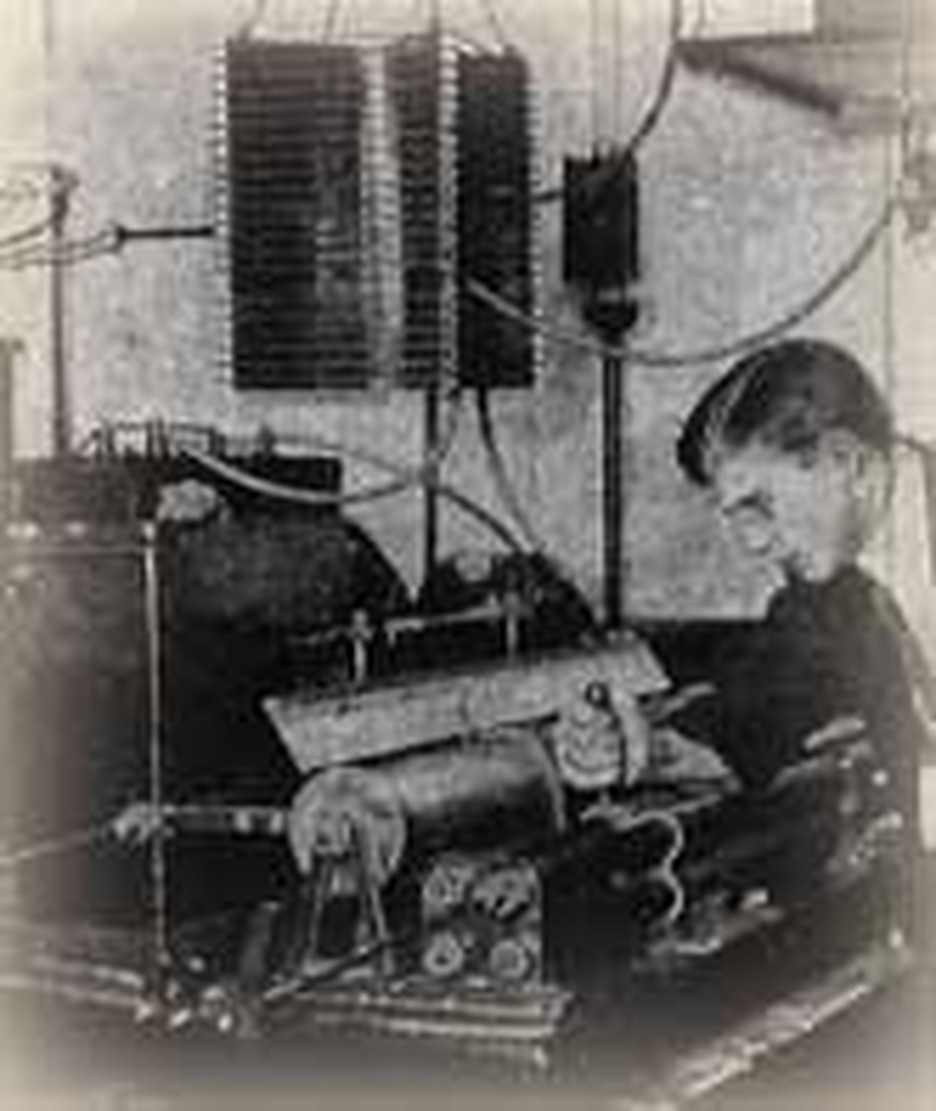
The first person to theorize the existence of radio waves was the Christian physicist James Clerk Maxwell. His studies of light led him to the electromagnetic theory and in 1865 he proved that radio waves are possible. Around 1885, the German scientist Heinrich Rudolf Hertz actually produced and detected radio waves.
By 1890, Édouard Branley had found a way to convert incoming signals to direct current, an important development in radio reception. In 1901, Guglielmo Marconi (working with ideas that he is sometimes accused of "borrowing" from others) combined the equipment of Hertz and Branley to transmit a radio signal across the Atlantic. Early radio messages were sent in morse code because voice transmission required more power and better signal control than were available at the time.
As its famous names show, development of radio was a thoroughly international effort. That is fitting in light of its international reach. Public radio broadcasts began on November 2, 1920. Station KDKA of Pittsburgh adertised that it would broadcast the Harding-Cox election returns. Few people had the equipment to enjoy the results, but a precedent was set. By scheduling radio broadcasts, a whole new world of opportunities opened up.
On this day, January 2, 1921, just two months to the day after its first broadcast, KDKA aired the first religious service in the history of radio. It was undertaken by Westinghouse to test its ability to do a remote broadcast far from a radio studio. Pittsburgh's Calvary Episcopal Church was chosen because one of the Westinghouse engineers happened to be a member of the choir and made the arrangements. The junior pastor, Rev. Lewis B. Whittemore, preached because the senior pastor was leery of the new medium. The technicians (one a Jew, one Catholic) were outfitted with choir robes in order to keep them from distracting the congregation.
KDKA soon offered a regular Sunday evening service from Calvary Episcopal Church. The senior pastor, Rev. Edwin Van Ettin, overcame his initial reluctance to become the regular speaker. (Regular broadcasts continued through 1962.)
In no other country of the world has religious broadcasting taken such hold as in the United States. Curiously enough, in light of the huge radio ministries that exist today, radio was viewed by many ministers as a frivolity if not an outright evil. They resisted using its medium to spread the gospel. But others, such as Paul Radar, Chicago's pioneer Christian broadcaster jumped at the chance. He founded WJBT (Where Jesus Blesses Thousands). The government soon had to limit the number of religious stations. The growth of religious programming led to the formation of the National Religious Broadcasters on September 21, 1944 at a convention in Chicago's Moody Memorial Church.
Today, radio is a powerful means of reaching people for Christ, especially those trapped behind the lines in nations where preaching the gospel is not allowed. Radio knows no walls or fences.
Marconi is said to have gazed at the distant horizon one day and thought how the human mind could bridge any distance, even reaching God in prayer. This encouraged him to believe that hertzian waves also might overcome the obstacles of distance. Supposedly, that started him on his experiments. Today, thanks to thousands of other inventors and broadcasters, God's word reaches the farthest corners of the earth in hundreds of languages by radio.
Bibliography
- Christian History Institute files, including papers from Calvary Episcopal church.
- Curtis, A. Kenneth, et al. Dates with Destiny. Tarrytown, New York: Revell, 1984.
- "Marconi" and "Radio." Encyclopedia Americana. Chicago: Encyclopedia Americana, corp., 1956.
- Erickson, Hal. Religious Radio and Television in the U. S. 1921-1991. Jefferson, N. C.: McFarland, 1992.
- Graves, Daniel. Scientists of Faith. Grand Rapids, Michigan: Kregel, 1996.
- Hill, George H. Airwaves to the Soul: the influence and growth of religious broadcasting in America. Saratoga, California: R & E Publishers, 1983.
- Coulson, C. A. Science and Christian Belief. Fontana Books, Wm. Collins Sons & Co. Ltd.: London and Glasgow, 1958.
Last updated May, 2007.







